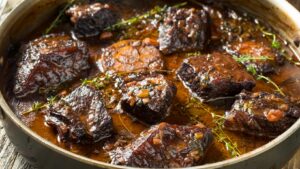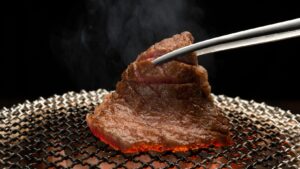Beef tips, those succulent little morsels of meat, can transform any meal from ordinary to extraordinary. But how does one achieve that perfect balance of flavor and tenderness? That’s where this article comes in, offering a deep dive into the art and science of cooking beef tips.
Whether you’re a seasoned chef or a kitchen novice, you’ll find something to whet your appetite. From selecting the right cut of beef to mastering the cooking process, we’ll guide you every step of the way. So, let’s embark on this culinary journey together, and elevate your cooking game to new, mouthwatering heights.
Cooking Beef Tips
Understanding Different Beef Cuts
Immersion in the understanding of different beef cuts initiates the process to master the art of cooking beef tips. Familiarity with each type’s unique characteristics enhances your final dish’s flavor and texture. For instance, Sirloin Tips originate from the sirloin, but Tri-Tip comes from the bottom sirloin, indicating differences in beef tips based on their originating section.
Unraveling the complexity of each beef cut, one discovers that Sirloin Tips, often lean, provide a robust flavor. In comparison, the Tri-Tip, boasting a greater amount of marbling, offer a richer, more succulent taste. Culinary exploration can benefit significantly from an understanding of these distinct variations.
The Importance of Meat Quality and Marbling
Recognizing the importance of meat quality and marbling stands paramount in creating delectable beef tips. Meat quality, derived from factors such as cattle breed and diet, profoundly influences the final outcomes of your dish. Premium breeds like Angus and Wagyu, renowned for their high-quality meat, factor prominently in this equation.
Marbling, streaks of fat interspersed within the lean meat, significantly affects the meat’s flavor, juiciness, and tenderness. In essence, enhanced marbling results in a richer flavor and a more tender texture. For example, USDA Prime, noted for its high marbling content, guarantees a luxurious eating experience, making it an optimal choice among chefs and food enthusiasts.
Guidelines such as these provide an analytical framework for understanding and implementing the cooking process of beef tips. They aim to inspire a collaborative culinary journey encompassing the selection, preparation, and mastery of cooking beef tips.
Preparing Beef Tips for Cooking

Given the significance of beef tip preparation detailed in previous sections, understanding optimal techniques for trimming, cutting and marinating beef tips proves vital to overall flavor, texture, and the culinary result.
Trimming and Cutting Techniques
Perfecting the art of trimming and cutting beef tips isn’t rocket science. It demands attention to detail, a steady hand, and a sharp knife. Begin by removing excess fat and connective tissue, known as sliver skin, from the outer section of the meat cuts. Doing so allows the meat to absorb more marinate and cook evenly, ensuring a delectable outcome.
Next, concentrate on making uniform-size cuts. In two-inch size, for example, means even cooking and consistent taste for each piece. Use a sharp, thin-bladed knife, preferably a boning knife, for a smoother cutting process.
Finally, consider the grain of the meat when cutting. Slicing against the grain yields shorter meat fibers, which results in tender beef tips, enhancing the eating experience.
Marinating for Flavor and Tenderness
Marination serves two purposes: it infuses flavor and tenderizes the beef tips. Create a marinade using acidic liquids, such as vinegar, wine, and citrus juices, combined with oils and seasonings like spices, herbs, and garlic. The acid in the marinade breaks down the tough fibers in the meat, making it tender, while the oil and seasonings add flavor.
Duration of marinating impacts the tenderness and flavor of the final product. However, over-marination can make the meat mushy. A recommendation gravitates towards a marinating period of 2-4 hours for beef tips, offering optimal tenderness and flavor infusion.
Remember, marinate in the refrigerator to maintain food safety standards. Prior to cooking, let the beef tips come to room temperature; this processes yields even cooking.


